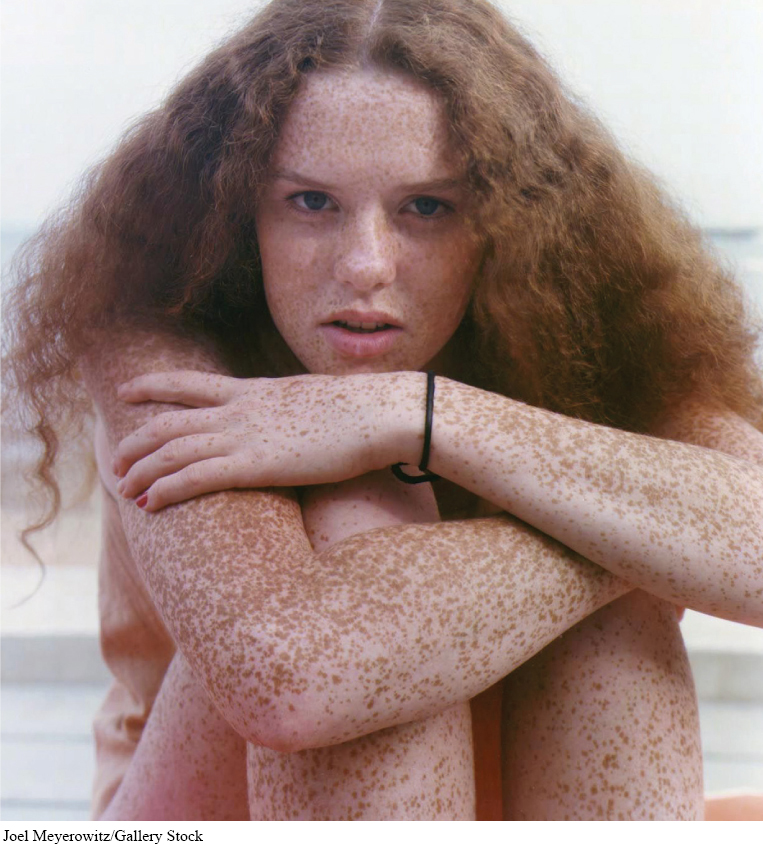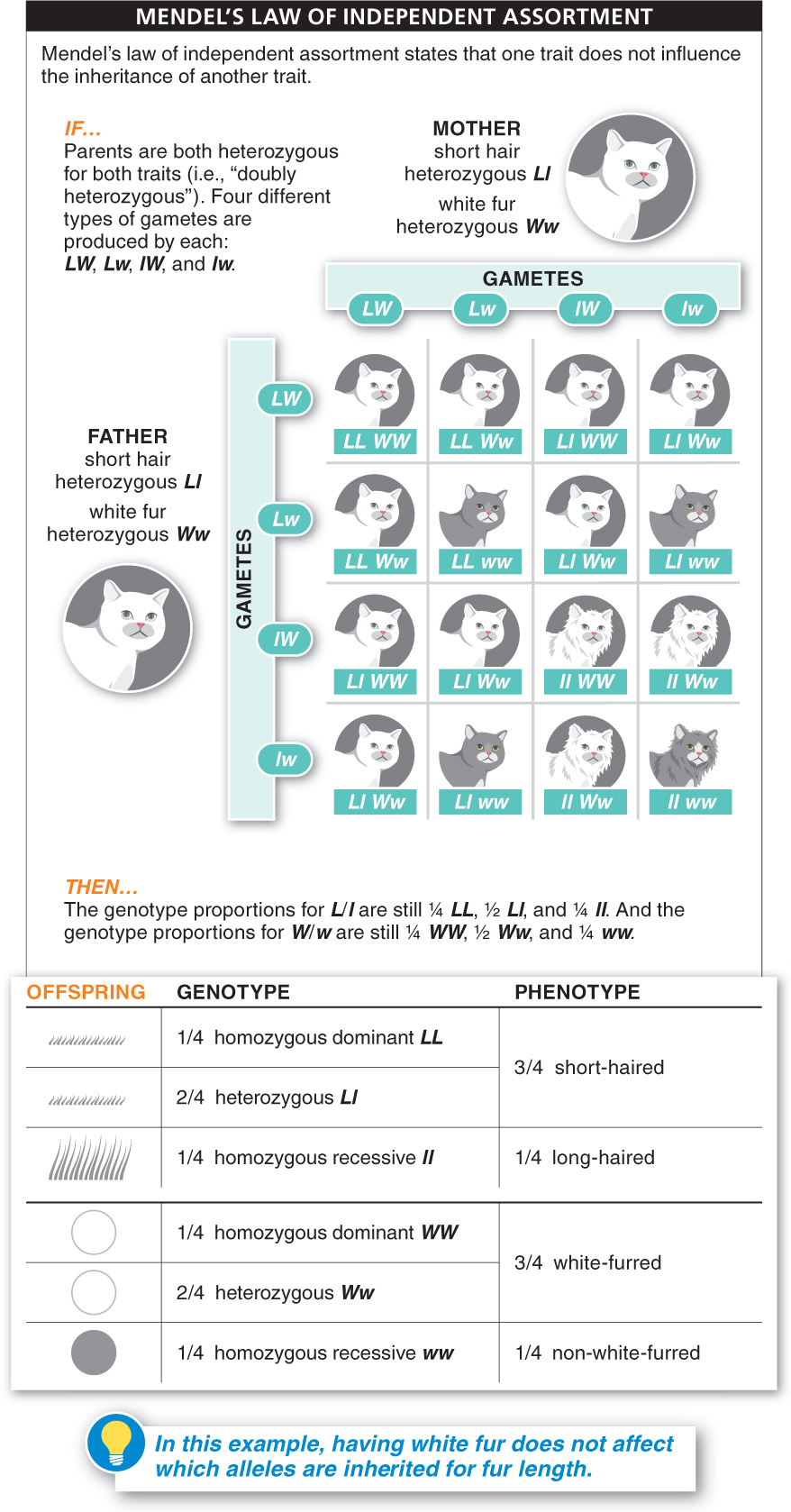7.16–7.17: Some genes are linked together.

Different genes influence red hair and freckles, so why are they often inherited together?
7.16: Most traits are passed on as independent features: Mendel’s law of independent assortment.
Sometimes you can be right about something for the wrong reason. This happened to Gregor Mendel. He didn’t know that genes were carried on chromosomes. He believed that the units of heredity were just free-floating entities within cells. Given this perspective, it made sense to him that the inheritance pattern of one trait wouldn’t influence the inheritance of any other trait. He believed that all genes behaved independently.
“…the relation of each pair of different characters in hybrid union is independent of the other differences in the two original parental stocks.”
— GREGOR MENDEL, clearly articulating the idea of independent assortment in his publication “Experiments in Plant Hybridization” (1865)
It helps to consider an example. Earlier in this chapter we saw that all cats with completely white fur have at least one parent that also has completely white fur. This is because white fur is caused by a single dominant gene.
Imagine that you had a true-breeding population of cats with white fur (remember, “true-breeding” for a trait means that all offspring always manifest the trait; in the case of white fur, all of the individuals have the genotype WW). Now suppose that an individual in this population mated with a cat from a true-breeding population of cats that all had some colored fur (all individuals have the genotype ww). All of their offspring would have white fur, but they would be heterozygous (Ww), getting a dominant allele from their white-furred parent and a recessive allele from the other parent. If two heterozygotes had offspring together, though, they would produce three-quarters white-furred and one-quarter non-white-furred offspring, with genotypes in the ratio of ¼WW, ½Ww, and ¼ww. That is just what Mendel observed for traits in pea plants.
But what if we concurrently observed another characteristic of these cats? Suppose the original true-breeding population of white-furred cats (WW) was also true-breeding for long hair (all ll), a condition caused by carrying two recessive alleles for a single gene. And suppose that individuals in the colored-fur population (ww) were also true-breeding for short hair (all LL). The question is, do the alleles an individual inherits for the white-fur trait influence which alleles that individual inherits for fur length? And the answer is that they do not (FIGURE 7-28). Rather, the first cross of a long-haired, all-white cat with a cat having short, colored fur would result in offspring heterozygous for both traits—referred to as dihybrid—and expressing each of the dominant traits.

Figure 7.28: Independent assortment of genes.
Phenotypically, all of the offspring from this cross would have short, completely white fur. In a mating between two of these doubly heterozygous individuals—referred to as a dihybrid cross—three-quarters of the offspring would have the dominant trait and one-quarter would have the recessive trait, regardless of which trait you are tallying. In other words, neither trait influences the inheritance pattern for the other trait; all traits are inherited independently of each other. This is known as Mendel’s law of independent assortment.
In the next section we’ll see that, despite Mendel’s correct understanding that separate traits are inherited independently, his belief that this happened because all genes just float freely around in the cell was not correct. The genes, as we now know, are carried on chromosomes. And this sometimes leads to situations in which independent assortment does not occur.
TAKE-HOME MESSAGE 7.16
Genes tend to behave independently, such that the inheritance pattern of one trait doesn’t usually influence the inheritance of any other trait.
Briefly state Mendel’s law of independent assortment.

